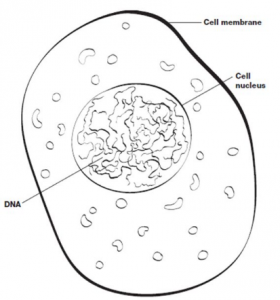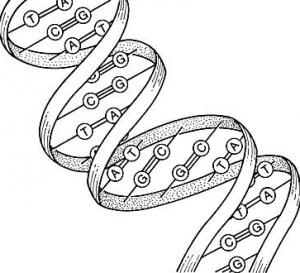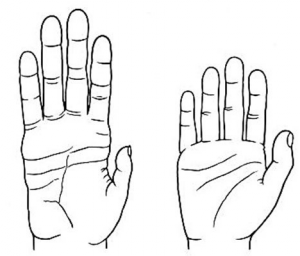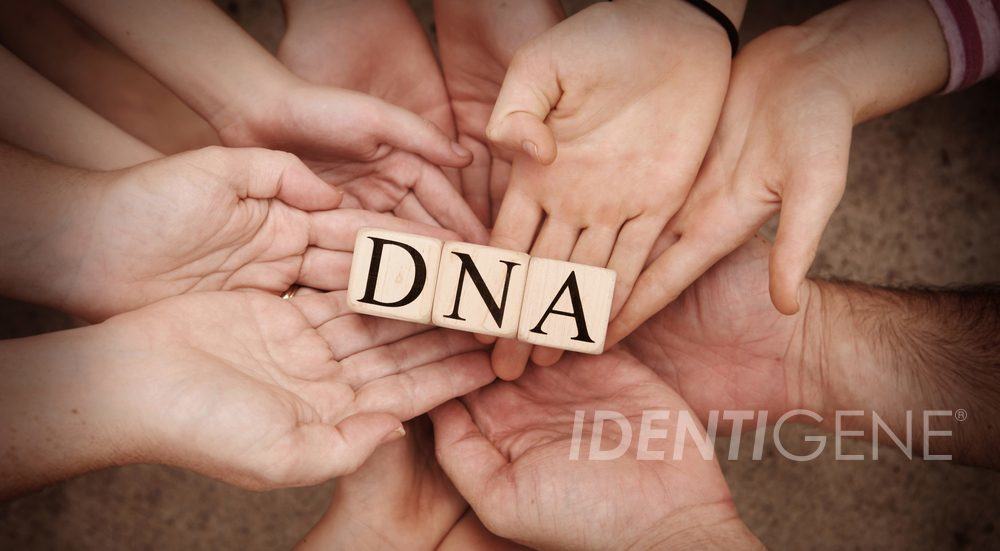DNA has often been called the building block of life, and with good reason. All living organisms have DNA – those infinitesimally tiny carriers of genetic information. In fact, we have it in every single cell in our bodies, except for red blood cells. That’s a lot of DNA! As a top paternity test lab, this subject is our specialty, so of course we have a fascination with all things related to it. Here are some facts about DNA that just may shock you.
DNA FACT #1: You have A LOT of it!
- > Your body is made up of roughly 100 trillion cells (that’s trillion with a ‘t’)
- > Each of these teeny tiny little cells contains about six feet of DNA coiled super-tightly
- > If you unraveled all DNA in your body and put it end to end, it would go from the earth to the sun and back hundreds of times!
DNA FACT #2: It contains a mountain of information
- > The steps in the DNA double-helix structure are called bases and are designated by the letters A, T, C, and G. These letters’ sequence holds the
 code to who we are
code to who we are - > The human genome has 3 billion bases and contains enough genetic information to fill 200 1,000-page books
- > To put it in a more modern perspective, that’s about 3 gigabytes of storage in a computer!
DNA FACT#3: Living organisms are more alike than you think
- > People share 99.9% of the same DNA. It’s that remaining fraction of a percent that makes us different
- > We share anywhere from 94-99% of our DNA with chimps
- > You are 75% identical to a mouse and 36% identical to a fruit fly

All of this makes sense when you consider that scientists believe that all living matter evolved from a single common ancestor. Also, we have a lot in common with other living beings: breathing, seeing, moving around. All of these jobs are connected to the function of DNA. When doing a paternity test, however, scientists don’t use the type of DNA that codes proteins for specific functions or physical attributes. Genes that are examined for a paternity test come from so-called junk DNA, which only has that unsavory name because scientists still aren’t exactly sure what its purpose is.
DNA FACT #4: If identical twins are both possible fathers of a child, the truth may never be determined
- > Fraternal twins share 50% of their DNA only, which is the same as non-twin siblings
- > Identical twins share 100% of the same DNA, which means that, if both men are possible fathers to the same child, a standard paternity test cannot determine the difference between the two men’s genomes
- > Although the men are genetically identical, they don’t have identical fingerprints
LEARN MORE ABOUT TWINS AND DNA TESTING
DNA FACT #5: Looks alone are never proof of paternity
We get a lot of questions from customers who insist that their child looks just like an alleged father (he has his blue eyes, or she has his facial shape), and so they can’t understand why a paternity test would show that the possible father and the child are not biologically related. Conversely, we also get questioned on how a child could be biologically related to a possible father when they look nothing alike.
- > A child gets 50% of their DNA from each parent
- > The traits of a child are determined not only by what their parents look like, but all the genomes from direct ancestors who came before, on both sides of the family
- > This genetic soup either can create a child that looks exactly like one or more parents, or a child that looks like neither, or something in between
LEARN MORE ABOUT FAMILIAL TRAITS
The only way to be absolutely sure that a child is biologically related to a possible father is through a DNA paternity test. Fortunately, these tests are now more affordable to the general public than ever, so it’s easy to get answers!
Follow us on Facebook and Twitter! If you have questions about paternity tests or other DNA testing services, please contact our Client Support Center at 888-404-4363, Mon-Fri from 8:30 AM to 5:30 PM Eastern Time. Our friendly, expert representatives are ready and happy to help. Get answers anytime by visiting our Help Center.
Sources
“Hands-on DNA.” Mathematical Miscellanea (n.d.): n. pag. Hands-on DNA. Web. 24 May 2016. <http://www.sciencecentres.org.uk/projects/handsondna/4.8%20-%20Amazing%20facts%20and%20quiz%20questions.pdf>.
Koning, Ellie. “17 Interesting Facts about DNA.” Holy Kaw! N.p., 22 July 2010. Web. 25 May 2016. <http://holykaw.alltop.com/17-interesting-facts-about-dna>.
McElwain, Mark. “Understanding Genetics.” Understanding Genetics. Stanford University, 1 May 2009. Web. 25 May 2016. <http://genetics.thetech.org/ask/ask309>.









